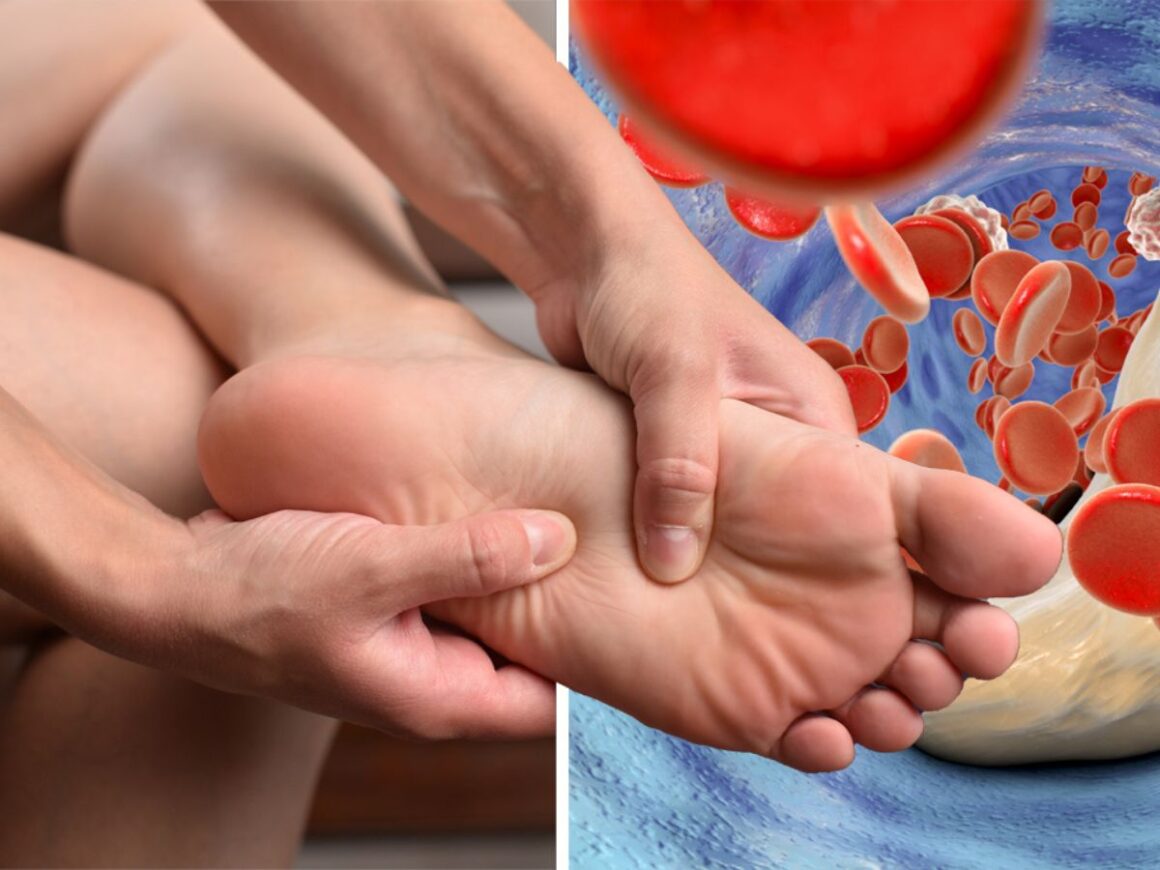High cholesterol isn’t an uncommon health problem, affecting numerous people across the globe. While most are cognizant of its impact on heart health, high cholesterol can also show up as symptoms in other parts of our body, such as the legs and feet. Recognizing these symptoms is key for early detection and swift action.
Pain and Cramping In Legs
If you’re experiencing constant pain and cramping in your legs, particularly at night, it might be high cholesterol at work. When cholesterol accumulates in the arteries, it can reduce blood flow and cause discomfort in the lower limbs.
Feeling of Numbness and Tingling
High cholesterol can also lead to numbness or a tingling sensation in the legs and feet. This happens when cholesterol buildup restricts blood flow to the nerves, resulting in altered sensations.
Cold Feet, Even When It’s Warm
Does it feel like your feet and toes are always cold, even in a warm room? It could be due to poor blood circulation from cholesterol deposits, which can affect heat distribution to your extremities.
Legs and Feet Swelling (Edema)
High cholesterol doesn’t just cause discomfort, it can also lead to swelling, or edema, in your legs and feet. Excess cholesterol clogging the arteries can affect fluid drainage, causing fluid retention and swelling.
Changes in Skin Color
A bluish or reddish tinge to your skin may be an indication of high cholesterol affecting your legs and feet. With blocked arteries restricting blood flow, discoloration can appear and hint towards possible circulatory issues.
Slow-to-Heal Wounds
Experiencing slow healing of wounds on your legs and feet? The impediment in blood circulation due to excessive cholesterol can hinder the body’s recovery process, delaying healing.
Hair Loss on Legs
If you’ve noticed unexplained hair thinning or loss on your legs, it could be a result of high cholesterol affecting blood vessels. Limited blood and nutrient supply to the hair follicles can cause hair loss in these areas.
Faint Pulse On Feet
A weak pulse on the feet is often indicative of excessive cholesterol in your system. Cholesterol buildup in arteries can affect blood flow, leading to a weaker pulse which can be felt during a physical check-up.
Development of Leg Ulcers
Individuals with high cholesterol might experience the formation of ulcers on their legs that are slow in healing and prone to infections. Hindered blood circulation compromises skin integrity, leading to ulcers.
Restless Legs Syndrome
Experiencing an irresistible urge to move your legs, especially during the night? It could be a condition known as Restless legs syndrome linked to high cholesterol. This can disturb your sleep considerably.
Being knowledgeable about these high cholesterol symptoms in legs and feet can facilitate early detection and avoid complications. Seek medical advice promptly if you notice any of these symptoms for appropriate management.

